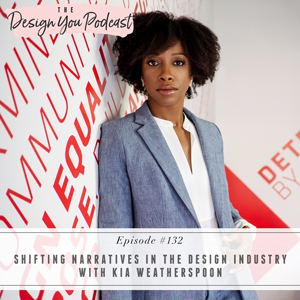
Wow, friends, what an inspiring episode I have for you today! This week’s guest, Kia Weatherspoon, is an advocate for interior design being standard for all, rather than luxury for a few. She joins me this week to talk about the fantastic work she’s doing in her business, and the differences she’s making to low-income communities through interior design.
Kia Weatherspoon is the design voice of impact and change. NCIDQ certified and a professional member of ASID, she’s spent the last 15 years defying every design stereotype, shifting the narrative, and making design a priority for all. She joins me today to explain the importance of creating beautiful spaces for everybody, regardless of background or circumstance, and explain why such spaces are a necessity, not a luxury.
Join us on the podcast this week for a moving, inspiring discussion about Kia’s work and how it’s creating waves in the interior design industry. We’ll discuss why keeping people at the forefront of your business can earn you more money, and why empathy goes a long way when running a business. This lady is changing the world, friends, it’s such an honor to have her here today!
Explicit Content Warning: You might want to listen to this episode with your headphones on – there are a few expletives, but heck, this episode is so great, I didn’t want to cut them out!
If you want to keep this conversation going, you have to join my free Design You Podcast community on Facebook. We have great conversations over there about the podcast episodes and our podcast guests are in there too! So head on over and I’ll see you there!





